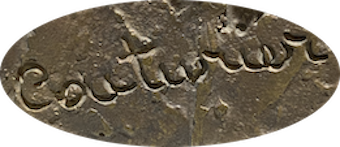

(Angoulême, 1905-Paris, 2008)

Born May 2, 1905 in Angoulême, he was the "last representative of a generation of artists (Germaine Richier, Alberto Giacometti, Maurice Estève, Jean Bazaine) who embodied French post-war creation", according to his biographer Valérie Da Costa.
Robert Couturier had learned lithography at the Estienne School, in Paris, before making his first sculptures in the early 1920s. His meeting with Aristide Maillol (1861-1944), in 1928, will be decisive: even today, the Musée Maillol keeps several of his works, and devoted to him in 2005, for his hundredth birthday, an important retrospective. The young sculptor will become his pupil then his friend. His first sculptures bear traces of Maillol's style. They are large, wide and generous in their volumes.
In 1936, the State made him his first public order, Le Jardinier, installed on the Esplanade du Trocadéro, in Paris. He participated in the aftermath of the International Exhibition of 1937, for which he carried out the interior decoration of the Pavillon de l'Elegance, where he designed 200 huge plaster mannequins. Other orders followed for the Société des Nations in Geneva or the French Embassy in Tokyo.
After the war, his style changed, the artist abandoned solid forms in favor of stretched lines, a transparent sculpture playing with emptiness and light. "My great joy is to evoke as much humanity as possible by seeking the most reduced and simplest means of matter," he said. One of his pivotal works, the Monument à Etienne Dolet, testifies to this new way of doing things.
Teacher at the L'Ecole Nationale des Arts Décoratifs in Paris (1946-1962), then at the Ecole Nationale des Beaux-Arts from 1966, he played his own role in the film by Agnès Varda, Cléo de 5 à 7 (1962). He was also one of the founders of the Salon de mai, one of the most important of the post-war period. In 1970, the Musée Rodin devoted an important exhibition to him, followed by the Monnaie de Paris, in 1975. His last sculptures, based on recovered materials, caused a sensation during the retrospective of the Musée Maillol, on the occasion of which he declared to the magazine L'Œil: "Life is a delicate affair, from which one must get away with honor ... I have been very lucky in my life, so lucky that I would be scandalized that it would stop!"